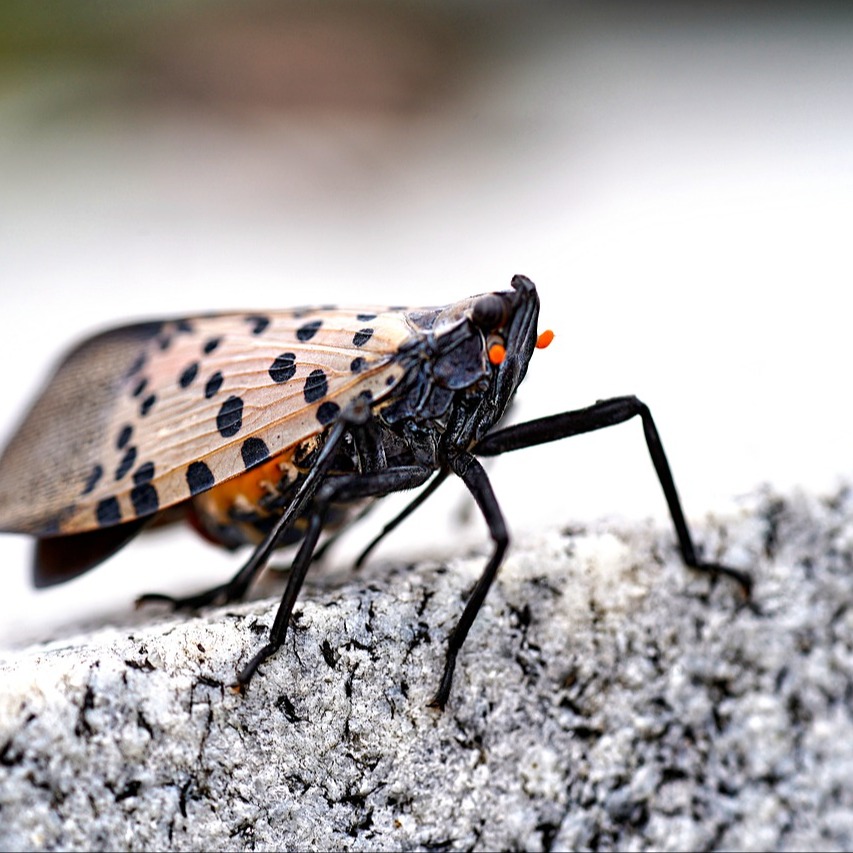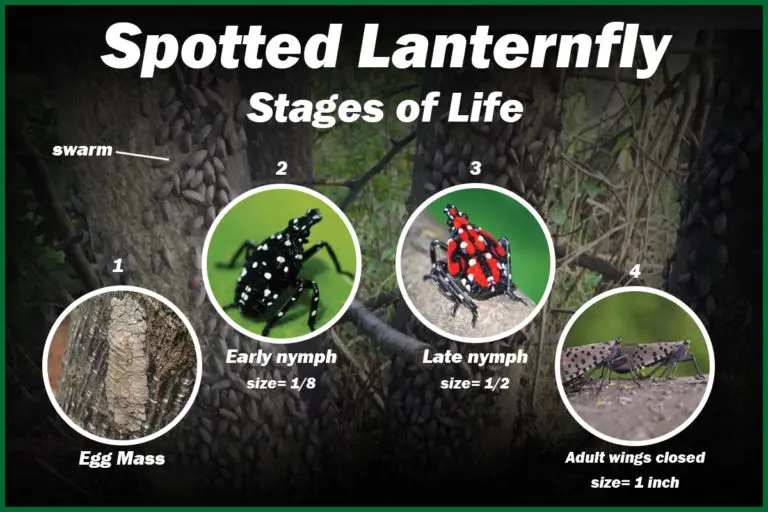Spotted Lanternfly Program

The spotted lanternfly is an invasive planthopper native to China, India, and Vietnam that was accidentally brought to the United States. This pest was first spotted in Berks County and has since been discovered in multiple southeastern Pennsylvania, New Jersey, and Delaware counties.
Why You Need to Report Spotted Lanternfly Sightings
The spotted lanternfly feeds on a wide range of plants (over 70!)—from trees to crops—sucking up sap from the stems and trunks. In the younger stage, they’ll feed on almost anything.
This wounds the plants, leaving trees and crops vulnerable to disease.

How Quickly Do Spotted Lanternflys Grow?
After hatching, spotted lanternflies only take about two months to reach adulthood, so it does not take long for the egg masses on your trees to turn into a giant swarm.
The presence of this pest has the potential to greatly impact the quality of life and landscape in your community. Don't hesitate to report any sightings, as swift action is crucial.
How to Report Spotted Lanternfly Sightings (State By State Guide)
Pennsylvania
- Pennsylvania Department of Agriculture spotted lanternfly website.
Report SLF sightings in Pennsylvania online.
New Jersey
- New Jersey Department of Agriculture spotted lanternfly information
Report SLF sightings in New Jersey online.
Delaware
- Delaware Department of Agriculture spotted lanternfly information
To report SLF sightings in Delaware, follow the instructions linked above and email HitchHikerBug@delaware.gov.
Green Lawn Fertilizing Can Get Rid of Spotted Lanternflies
Green Lawn Fertilizing can get rid of any spotted lanternflies around your home, community, or business and help prevent them from returning by treating the affected trees on your property. To learn more about Spotted Lanternfly treatment or other lawn care services call us today at 888-581-5296 for a free quote.
Get Started Today
What Our Customers Are Saying
Christine B. – Hamilton,
This service has allowed me to enjoy my beautiful lawn each day without worry. I love my green lawn!
Debora H. – Coatesville,
Love our lawn! Great work Green Lawn. Always on schedule and looks amazing every day. I highly recommend this company!!
Victoria P. – Reading,
Our lawn is now green and prefect, SO much better than last year, not a weed in sight, perfect for backyard parties.
Randolph K. – Englishtown,
My lawn looks like a carpet, we are weed free- front yard and back yard!
Ian P. – Glenmoore,
Green Lawn is the best!!
Ryan P. – Media,
Looking super GREEN!!!
Andrew M. – Allentown,
Flowers blooming and grass green as ever with Green Lawn Fertilizing!
Jim R. – Quakertown,
Green Lawn was recommended to me by my brother who is very picky! I do Landscaping for a living and I can honestly tell you that I highly recommend Green Lawn!

Lawn Insect Guide
Understand the insects most commonly found in lawns in this region and know how to keep them from damaging your property.


